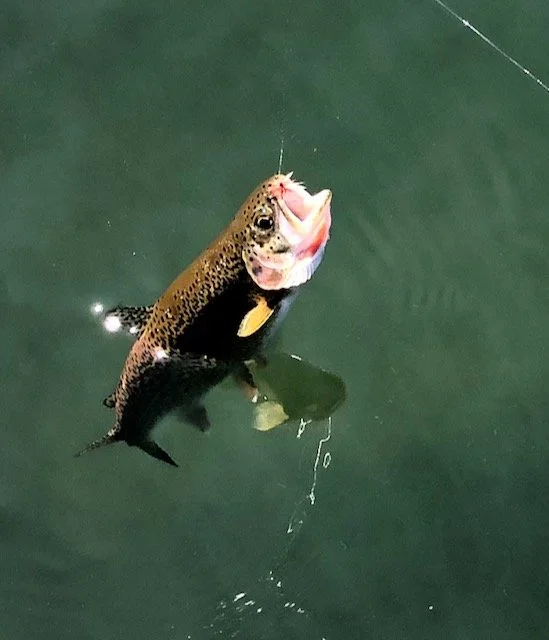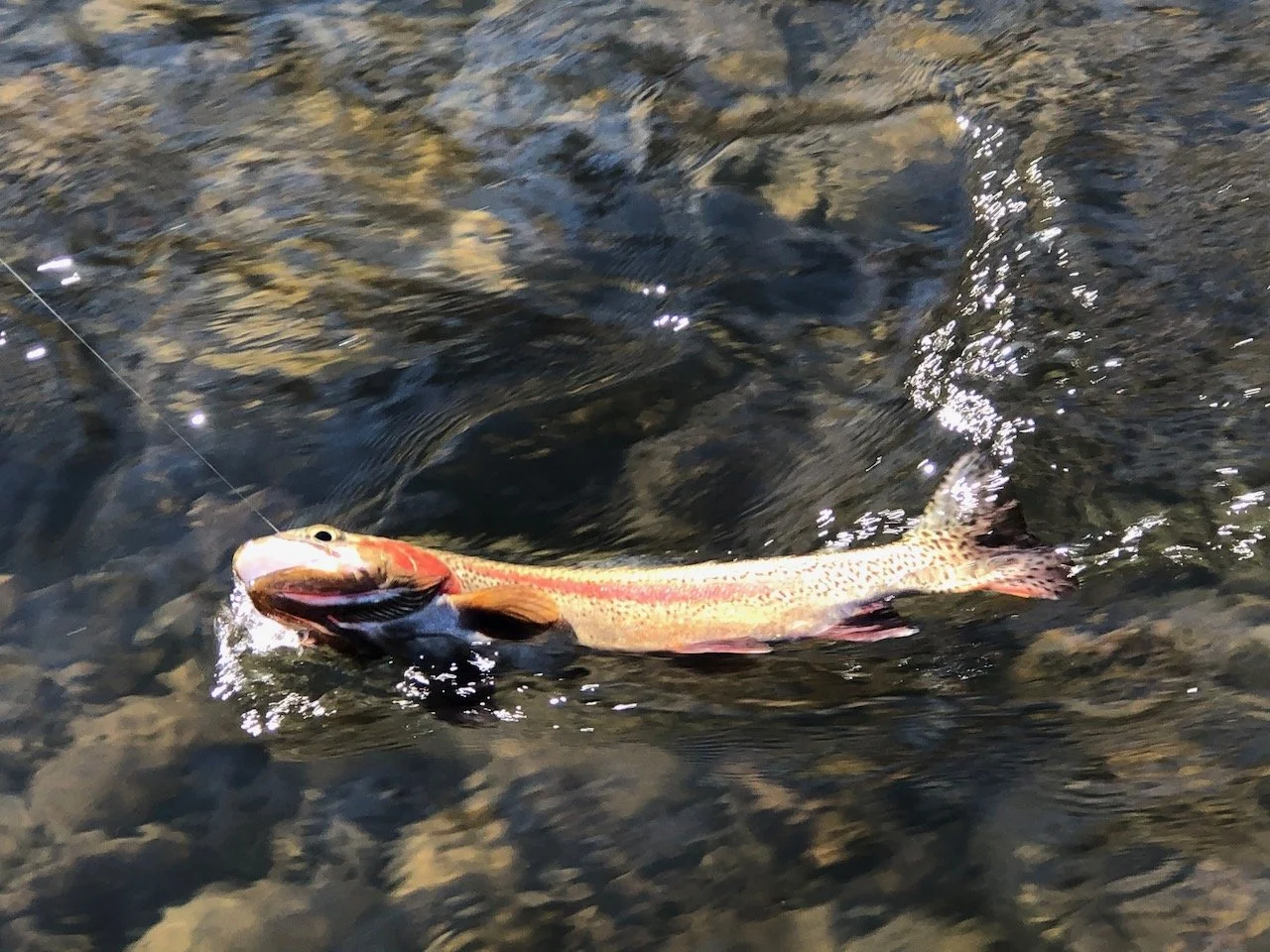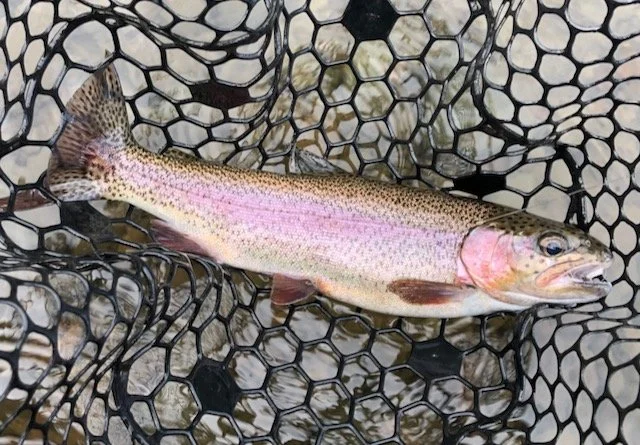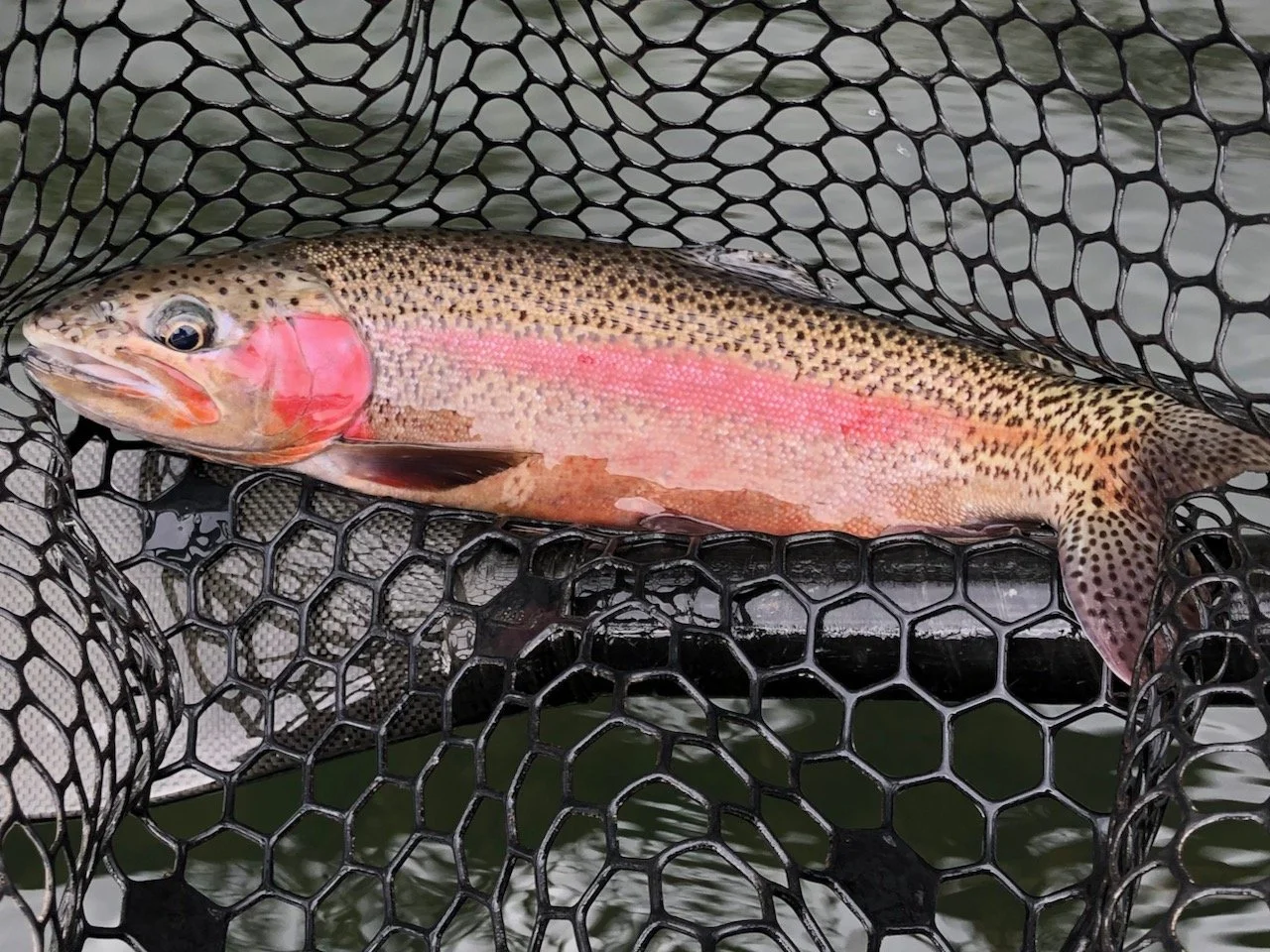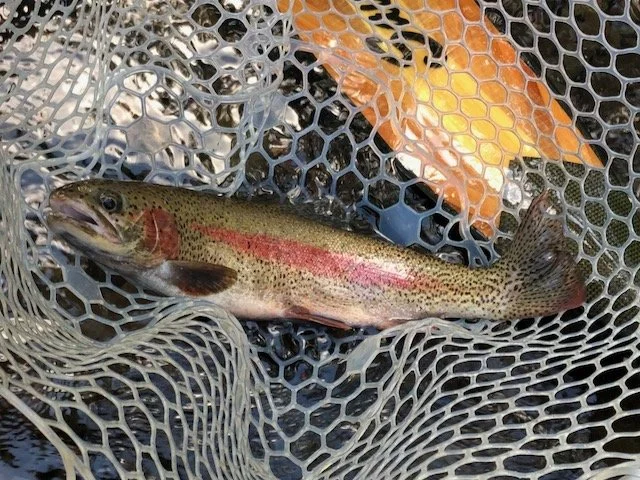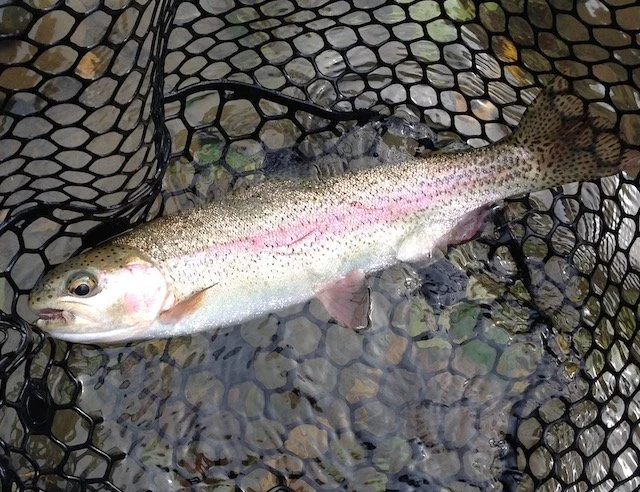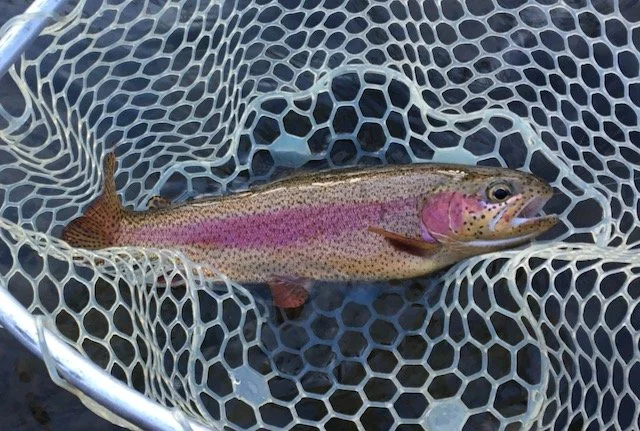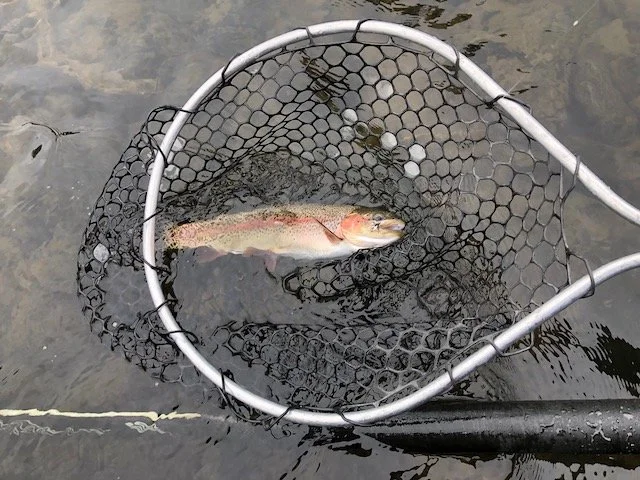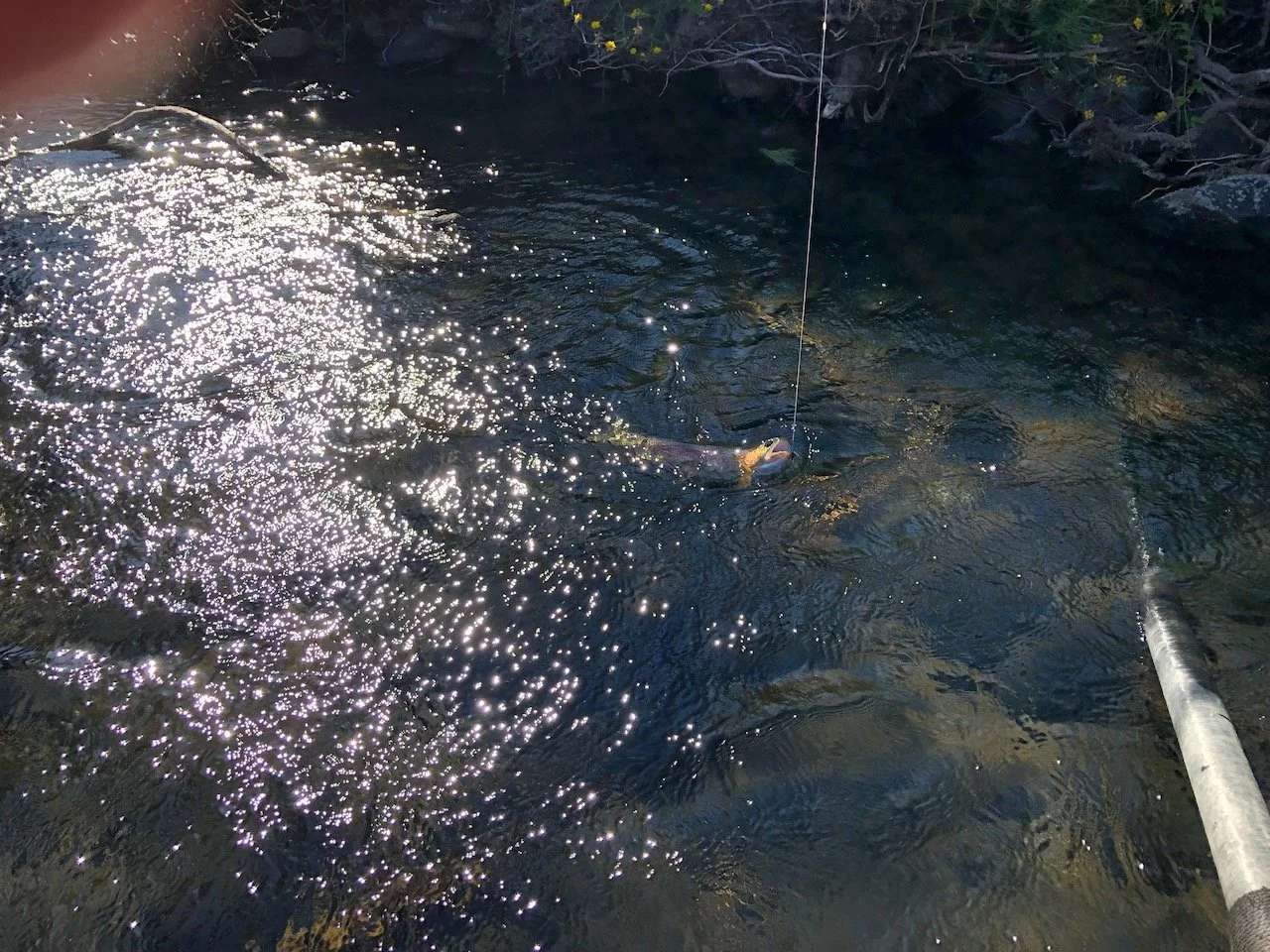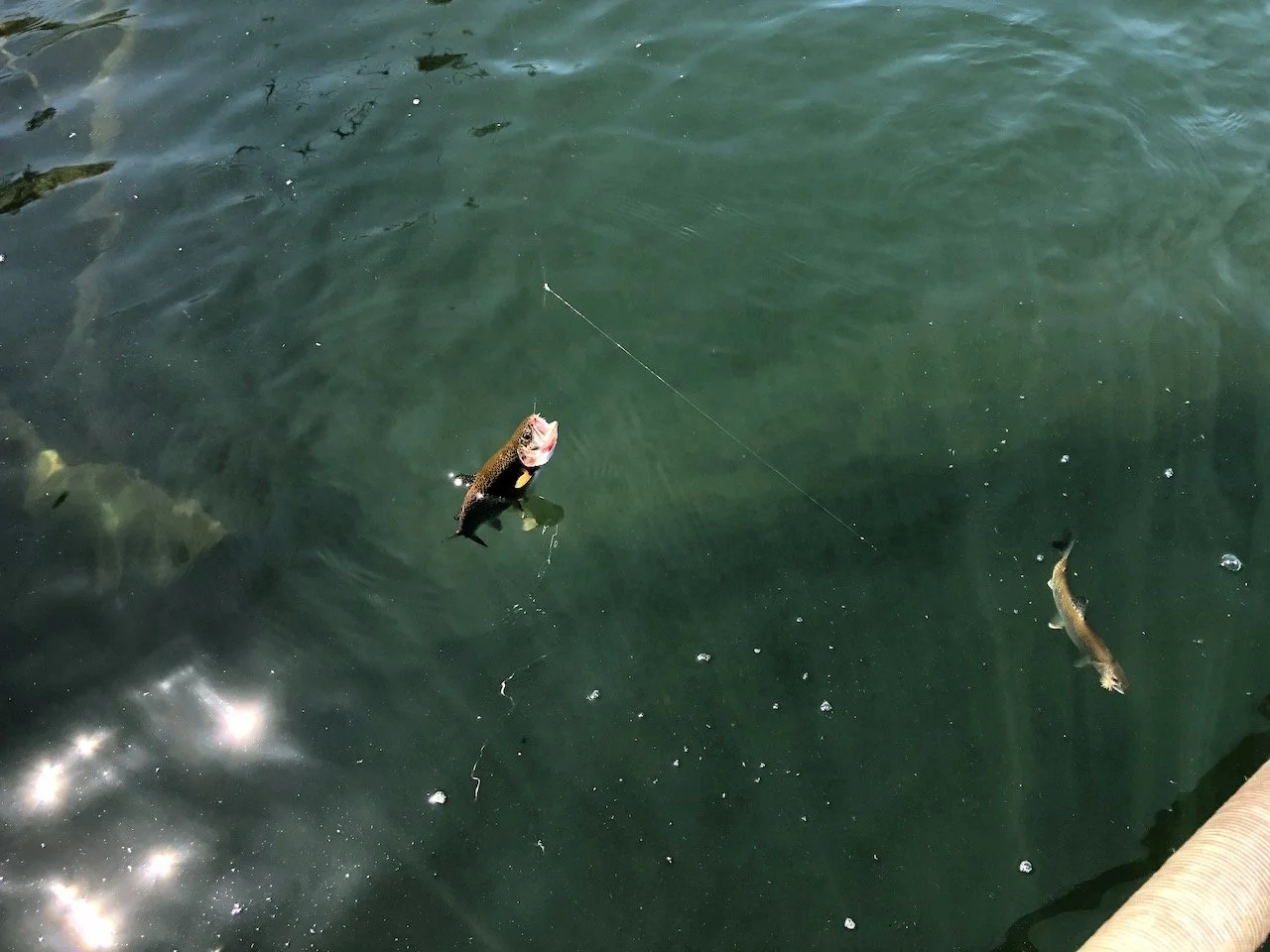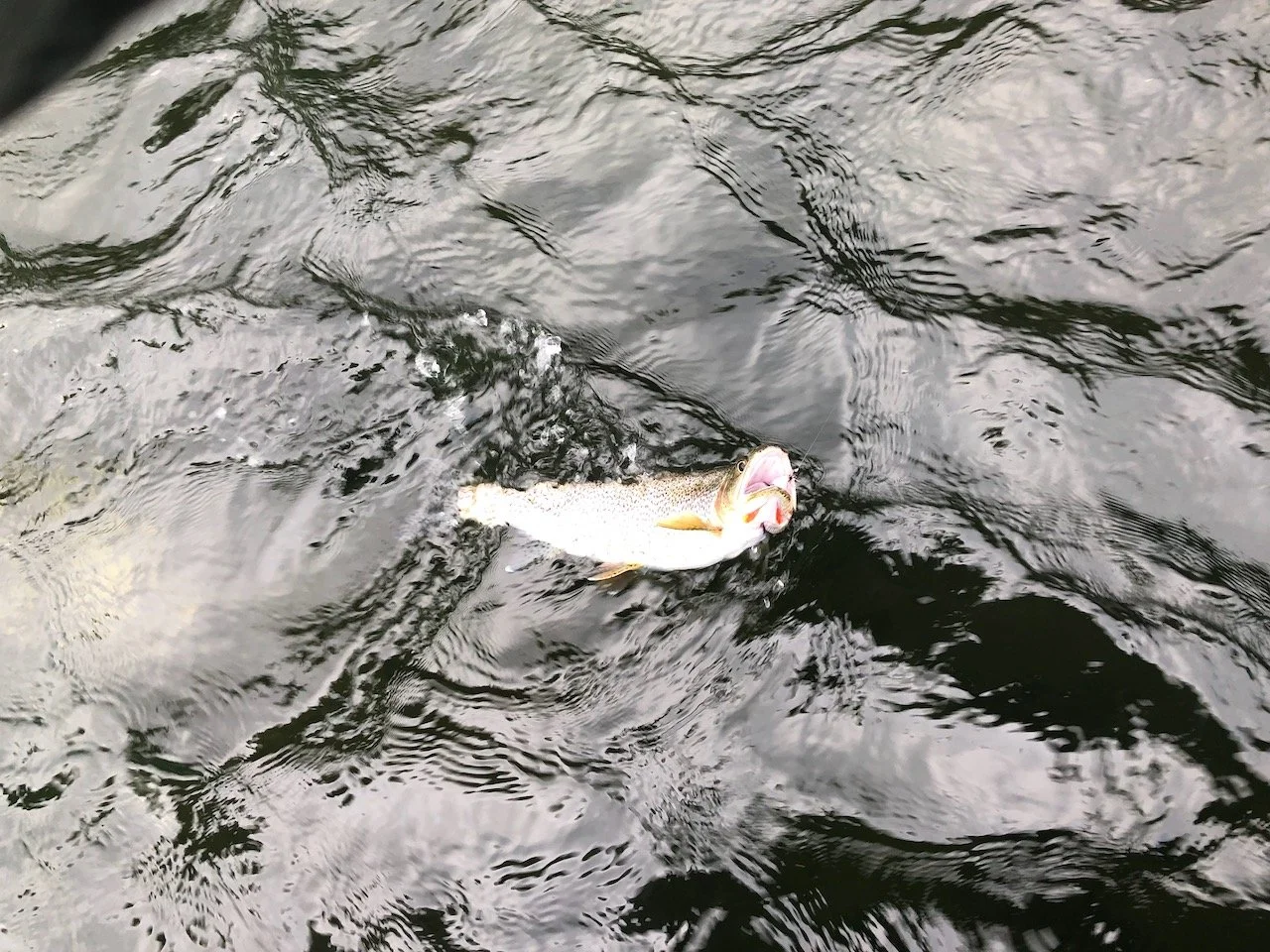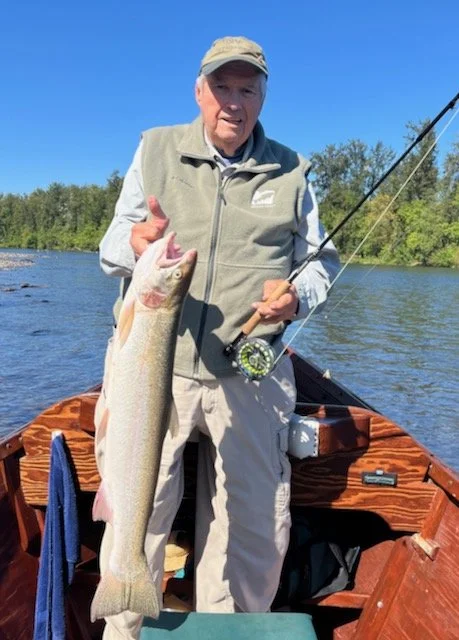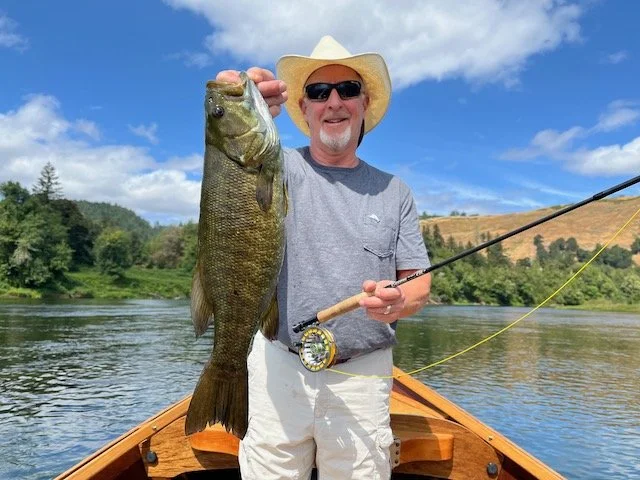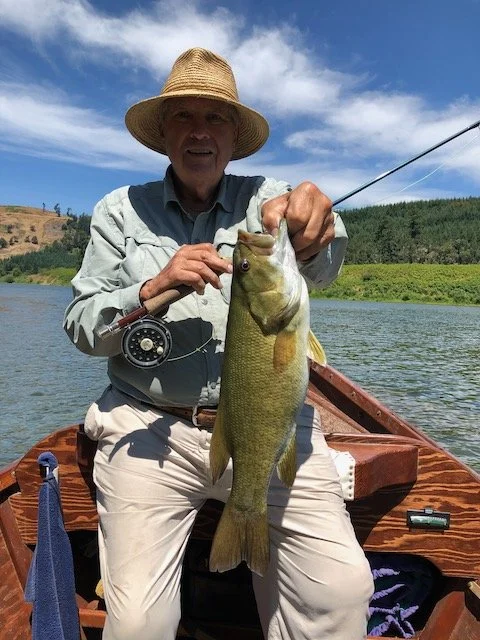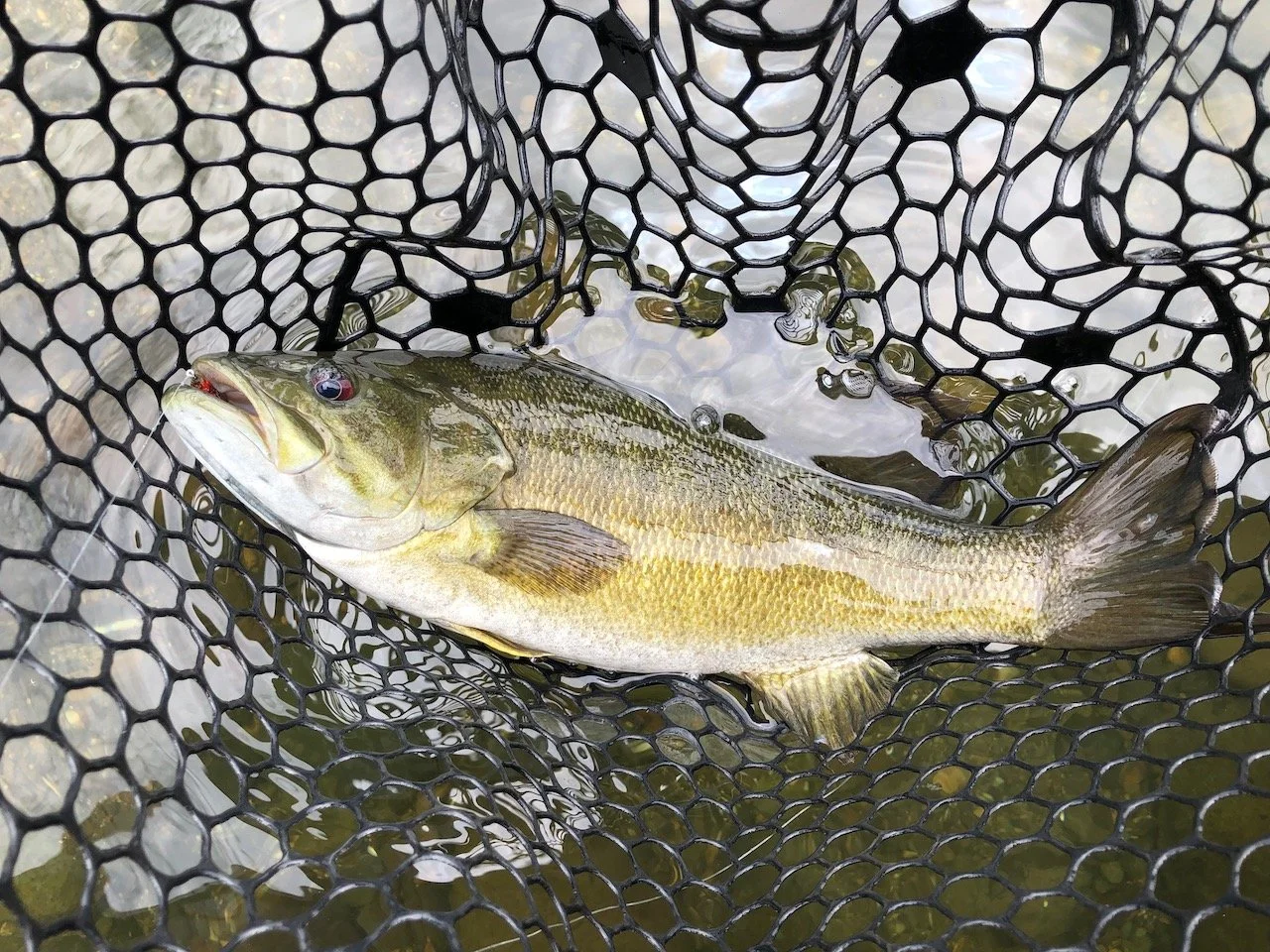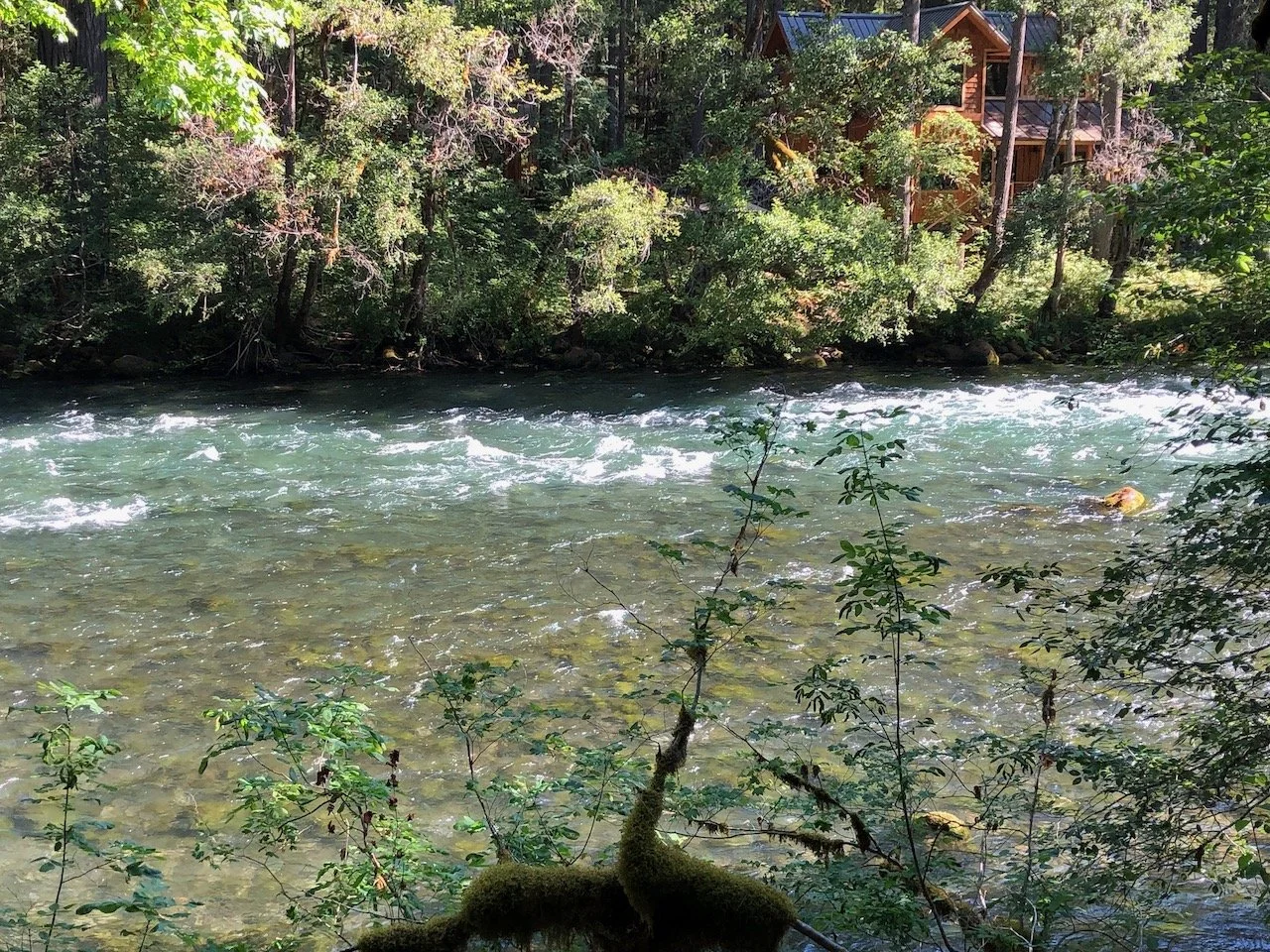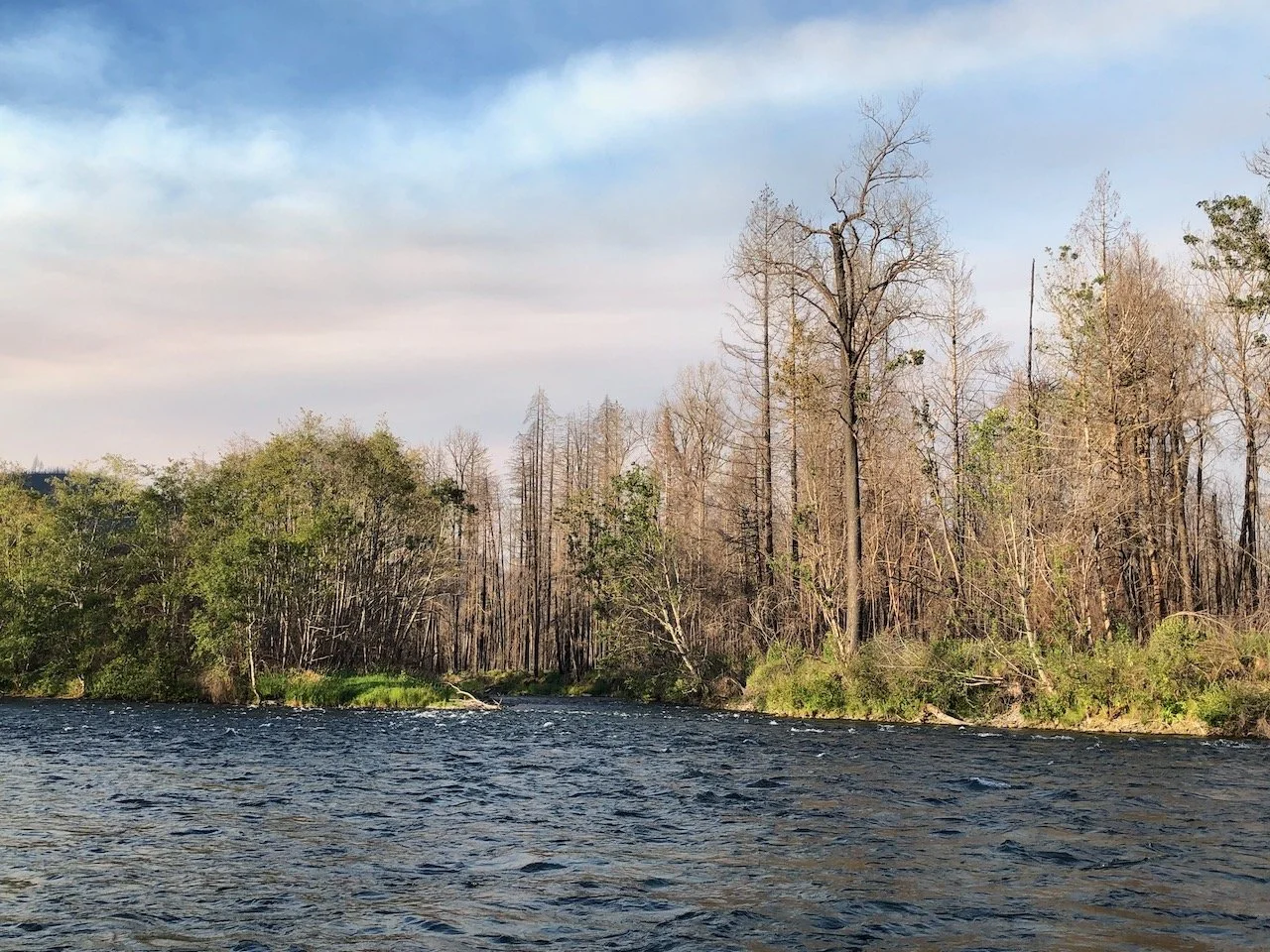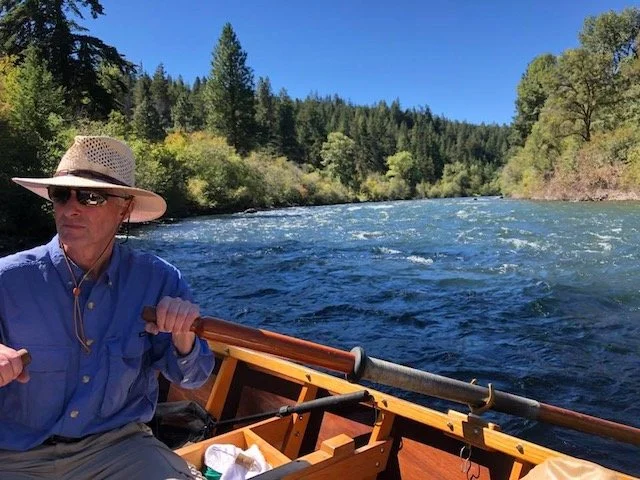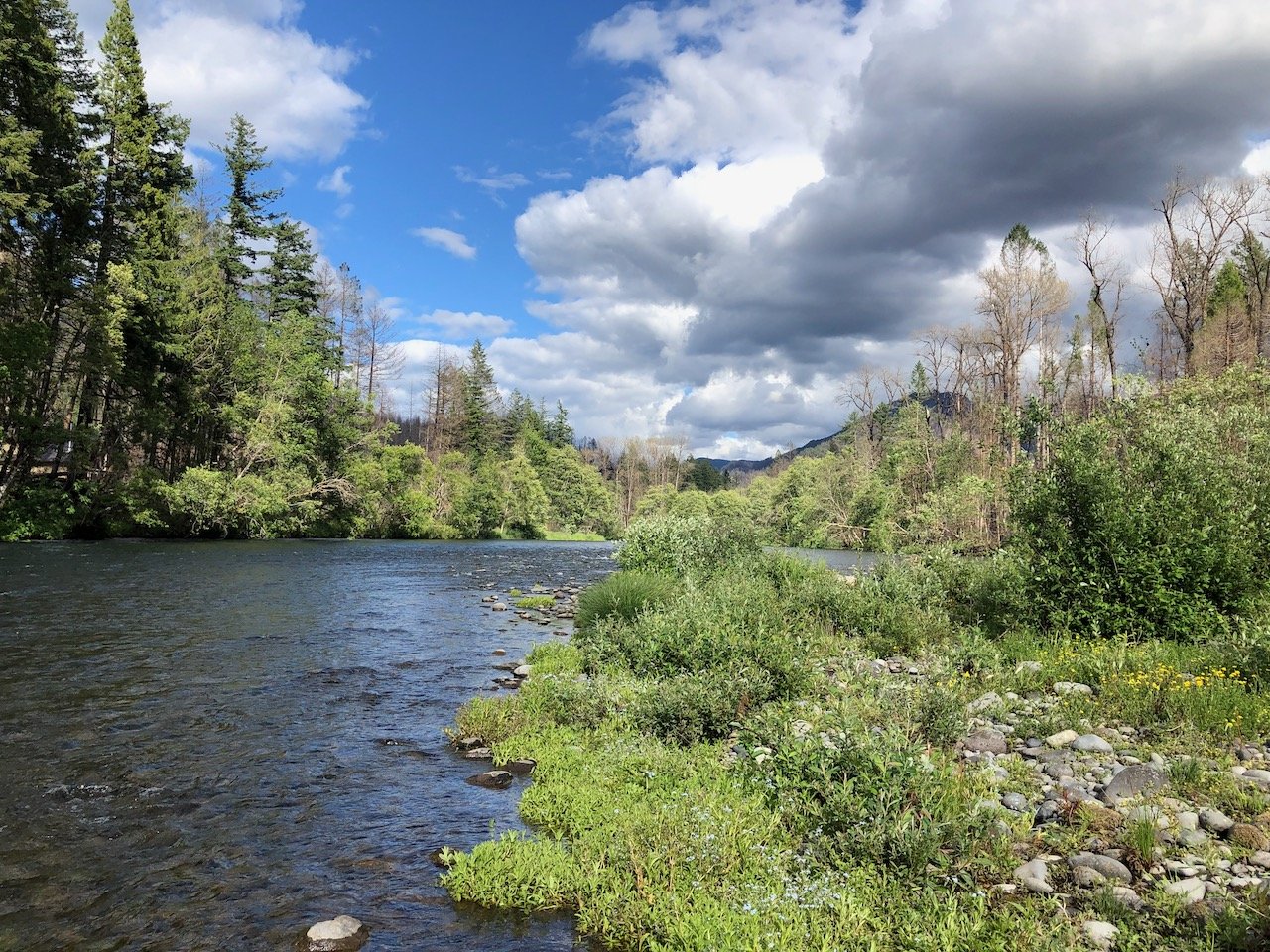
Rivers, Fish, Birds, and Wildlife
Trout
Native rainbow trout, known locally as “red sides” for their striking, crimson-stripped sides, are abundant in the upper and middle sections of McKenzie and Willamette rivers. Given the right water and weather conditions, they readily take dry flies and, when hooked, are known for their airborne acrobatics. Near Springfield and the confluence of the McKenzie and Willamette rivers and downstream to Harrisburg, coastal cutthroat become more abundant, though good numbers of healthy rainbows are also present. In addition to rainbow and cutthroat trout, steelhead are occasionally caught on dry and swinging wet flies. Other species include Bull Trout (mostly in the upper reaches), and mountain whitefish.
Smallmouth Bass
Unlike largemouth bass, smallmouth bass prefer clearer, more pristine waters, shelf rocks, gravelly bottoms, and moving waters – more like those favored by trout. Smallmouths are not native to the Pacific Northwest but have been introduced in many lakes and reservoirs to provide sportfishing opportunities. How they arrived in the Umpqua River system is a mystery, but once there, the population exploded. Smallmouths are aggressive feeders, and hard, scrappy fighters when hooked on a fly. They are a great sportfish during hot summer days when the trout fishing can be slow.
Birds and Wildlife
Floating a river is not just about fishing. Fresh air, sunshine, occasionally some rain, concentrating on your casting, positioning the fly, and anticipating the rise can clear your mind of more troubling thoughts. It also offers a great opportunity to view and listen to the chorus of birds, and to observe wildlife. Commonly seen birds include ospreys, bald eagles, great blue herons, belted kingfishers, water ouzels, a wide variety of warblers, finches, sparrows, swallows, woodpeckers, ducks, hawks, and more. Deer, mink, muskrat, raccoons, an occasional otter family, and beavers may also be seen.
McKenzie River
The McKenzie River tumbles westerly for nearly 90 miles from Clear Lake high in the Cascade Mountains through temperate forest to its confluence with the Willamette River just north of Eugene/Springfield. Running cold and crystal clear, it offers fast-flowing pocket water, shoreline seams, and broad riffles for anglers to fly fish for trout from a drift boat.
Willamette River
The Willamette River courses some 300 miles from high in the Cascades southeast of Eugene, winding through forest and farmland as it flows northward before joining the Columbia River at Portland. When flows are sufficient between Hills Creek Dam and Lookout Point Reservoir near Oakridge, the Willamette can offer some excellent dry fly fishing for wild rainbow trout from a drift boat. Below Dexter Dam at Lowell and down to Harrisburg, anglers can enjoy opportunities to fly fish for native rainbow and coastal cutthroat trout, and occasionally steelhead.
Umpqua River
The Umpqua River offers anglers an excellent opportunity to catch quality smallmouth bass on a fly. Its two main branches, the North Fork famous for its steelhead, and lesser-known South Fork, converge west of Roseburg and the river flows about 100 miles to the Pacific Ocean at Reedsport. Unlike the McKenzie and upper Willamette rivers, which maintain healthy year-around water temperatures for trout, the Umpqua’s low summer flows and long stretches of flat water attain much higher water temperatures during the summer months. The combination of clear water, rocky ledges, gravelly river bottoms, and plentiful aquatic life, are ideal habitat for smallmouth bass. Steve utilizes The Big K Guest Ranch to gain private access to the most remote sections of river that offer the best fishing.
